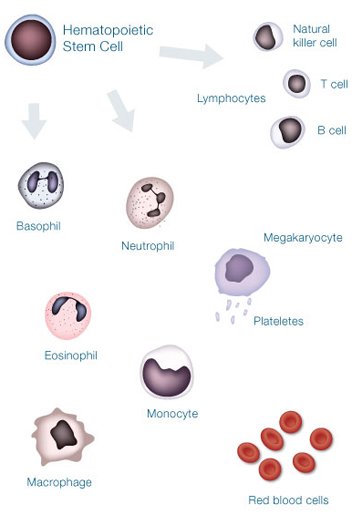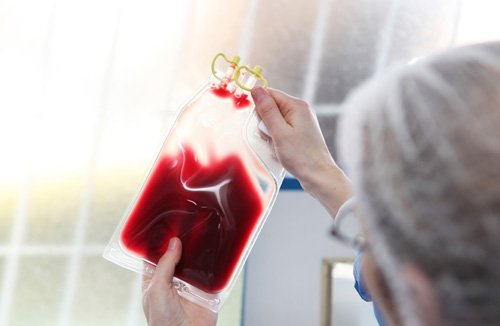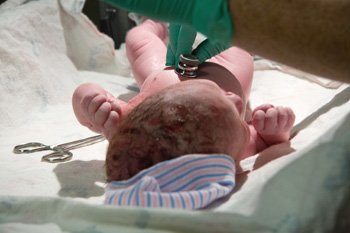In 1968, doctors performed the first successful bone marrow transplant. Bone marrow contains somatic stem cells that can produce all of the different cell types that make up our blood. It is transplanted routinely to treat a variety of blood and bone marrow diseases, blood cancers, and immune disorders. More recently, stem cells from the blood stream (called peripheral blood stem cells) and umbilical cord stem cells have been used to treat some of the same blood-based diseases.
Somatic Stem Cell Therapy: Using a Bone Marrow Transplant to Cure Leukemia
Leukemia is a cancer of white blood cells, or leukocytes. Like other blood cells, leukocytes develop from somatic stem cells. Mature leukocytes are released into the bloodstream, where they work to fight off infections in our bodies.
Leukemia results when leukocytes begin to grow and function abnormally, becoming cancerous. These abnormal cells cannot fight off infection, and they interfere with the functions of other organs.
Successful treatment for leukemia depends on getting rid of all the abnormal leukocytes in the patient, allowing healthy ones to grow in their place. One way to do this is through chemotherapy, which uses potent drugs to target and kill the abnormal cells. When chemotherapy alone can't eliminate them all, physicians sometimes turn to bone marrow transplants.
In a bone marrow transplant, the patient's bone marrow stem cells are replaced with those from a healthy, matching donor. To do this, all of the patient's existing bone marrow and abnormal leukocytes are first killed using a combination of chemotherapy and radiation. Next, a sample of donor bone marrow containing healthy stem cells is introduced into the patient's bloodstream.
If the transplant is successful, the stem cells will migrate into the patient's bone marrow and begin producing new, healthy leukocytes to replace the abnormal cells.
New evidence suggests that bone marrow stem cells may be able to differentiate into cell types that make up tissues outside of the blood, such as liver and muscle. Scientists are exploring new uses for these stem cells that go beyond diseases of the blood.


